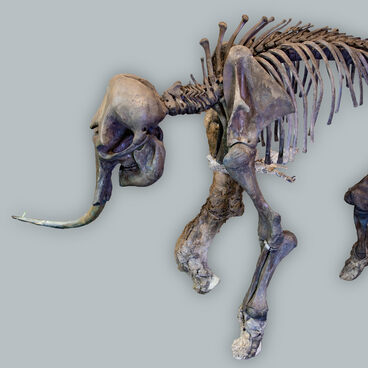Sergey Nikolaevich Morozov was born in Kemerovo region (Prokopyevsk) in 1947. He graduated from Surikov Art School in Krasnoyarsk. In 1973, the artist arrived in Norilsk by appointment, and that was where his active and fruitful artistic life began. He led artistic trips to Nordvik Bay and a plein air expedition “In the footsteps of the Northern Expedition” (a group exhibition of the participating artists was the outcome of the plein air).
Sergey Morozov also joined “Memorial”, a society of activists trying to preserve the terrible memory of the Norillag. He is one of the few artists in Taimyr who has addressed the theme of political repression in his art and, moreover, has devoted a whole series of works to it, called “In the Memory of Norillag”.
All the works in the series share a socio-philosophical approach, conveyed through metaphorical art forms. Each landscape hides deep implications and encourages the viewer to think about the historical past of Taimyr. “To the First Ones” is one of the paintings in this series.
On 23 June, 1935, the Council of People’s Commissars in Moscow adopted a resolution “On the Construction of the Norilsk Nickel Plant”, stipulating that the NKVD Administration of Camps was to be in charge of the shock construction and that a special camp was to be established for this purpose.
On 1 July of the same year the first group of 1,200 prisoners was brought to Dudinka; by 1939 their number reached 11,560. In all, 300 to 500 thousand prisoners had been transferred through Norilsk, about 60% were Russians, the rest came from 21 other nationalities: Latvians, Poles, Jews, Belarussians… Until 1939 barges with prisoners came from Krasnoyarsk along the Yenisey River, later — along the Northern Sea Route.
Five sections were formed to build the town, factories, port and the northernmost railway.
Norillag officially ceased to exist in 1956, at the same time as the other Stalinist camps after the debunking of the personality cult. In fact, the process of rehabilitation and liberation began immediately after Stalin’s death, in 1953, when Norilsk was granted city status.
The Norilsk complex was taken over by the Ministry of Metallurgical Industry. The former prisoners were replaced by new recruits who were hired to work at the plant across the Soviet Union.
Sergey Morozov also joined “Memorial”, a society of activists trying to preserve the terrible memory of the Norillag. He is one of the few artists in Taimyr who has addressed the theme of political repression in his art and, moreover, has devoted a whole series of works to it, called “In the Memory of Norillag”.
All the works in the series share a socio-philosophical approach, conveyed through metaphorical art forms. Each landscape hides deep implications and encourages the viewer to think about the historical past of Taimyr. “To the First Ones” is one of the paintings in this series.
On 23 June, 1935, the Council of People’s Commissars in Moscow adopted a resolution “On the Construction of the Norilsk Nickel Plant”, stipulating that the NKVD Administration of Camps was to be in charge of the shock construction and that a special camp was to be established for this purpose.
On 1 July of the same year the first group of 1,200 prisoners was brought to Dudinka; by 1939 their number reached 11,560. In all, 300 to 500 thousand prisoners had been transferred through Norilsk, about 60% were Russians, the rest came from 21 other nationalities: Latvians, Poles, Jews, Belarussians… Until 1939 barges with prisoners came from Krasnoyarsk along the Yenisey River, later — along the Northern Sea Route.
Five sections were formed to build the town, factories, port and the northernmost railway.
Norillag officially ceased to exist in 1956, at the same time as the other Stalinist camps after the debunking of the personality cult. In fact, the process of rehabilitation and liberation began immediately after Stalin’s death, in 1953, when Norilsk was granted city status.
The Norilsk complex was taken over by the Ministry of Metallurgical Industry. The former prisoners were replaced by new recruits who were hired to work at the plant across the Soviet Union.



